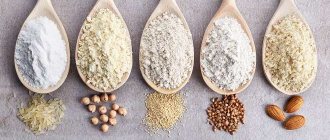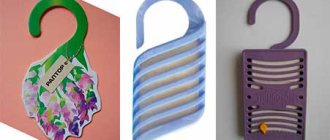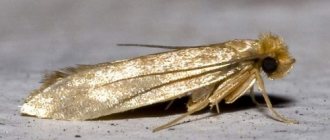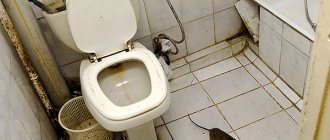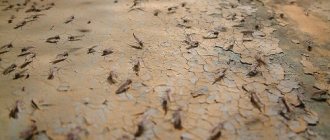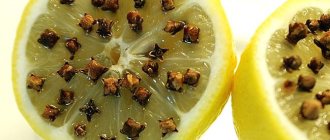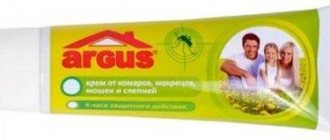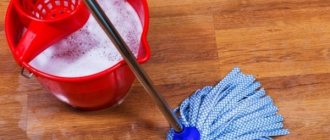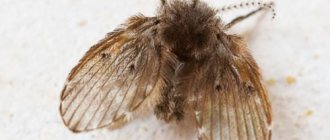What is the danger of fungus?
Not everyone knows what mold is and the harm it can cause to health. The fungus damages walls and cladding. The moldy fungus develops in colonies that destroy the wallpaper, the structure of the plaster as a result the walls turn black and begin to crack over time. If a fungus gets into a crack, it begins to attack the wall from the inside and then it will be almost impossible to overcome it.
The second negative aspect is the effect on the human body. Spores can enter through the respiratory system and remain inside until a suitable situation for their development is formed, for example, a decrease in immunity.
In rooms where fungus and mold appear there is often an unpleasant damp smell
Pathogenic microflora causes a number of diseases and symptoms:
- mycoses, dermatoses - fungal skin lesions
- dizziness, nausea, headaches
- vomiting, heartburn, bowel dysfunction
- pathologies of the musculoskeletal system
If you breathe in the fungus for a long time, chronic diseases of the cardiovascular system, kidneys, and liver develop.
Know the enemy by sight
Often people live in an apartment affected by fungus and do not realize the seriousness of this problem. To clearly understand the situation, be able to recognize mold that is harmful to health.
We recommend reading - Forewarned is forearmed! Which mold is the most dangerous?
Types of mold dangerous to the body:
- White - this type of fungus is common in flowerpots, the reason is excess moisture or fertilizer that feeds the fungal environment. Allergic reactions in the human body are possible.
- Green - often occurs on food products, mainly on bakery products. Less commonly, this type of mold appears on brickwork. If ingested through food, it can cause diarrhea.
- Black - this type is perhaps the most common and dangerous. It can attack many surfaces: concrete, plaster, paint, wallpaper, wood, etc. If you remain under its influence for a long time, then, as a result, insomnia, dizziness, increased body temperature, migraine may appear, and more severe diseases may develop: bronchitis, asthma, pneumonia, skin diseases.
- Bluish - its manifestations are mostly found on wooden surfaces: window frames, natural parquet, furniture. Such mold can destroy even a layer of paint or varnish.
- Actinomycetes (in common parlance, radiant fungi) also love wood. Under their influence, the tree changes its natural color to a gray or brown tint, loses density, and is riddled with cracks.
If there are unexplained signs of cough, rhinitis, shortness of breath, this is an alarming call about the presence of mold in the apartment. Flying fungal spores can also cause nausea, vomiting, and chronic fatigue. In addition to the spoiled appearance, the fungus destroys building materials, affecting more and more new areas. Therefore, we must not hesitate, and even at the slightest manifestation of a problem, we remove the mold.
Reasons for appearing in the house
Fungal growth on the wall
Surfaces in a house or apartment can become moldy for various reasons:
- High air humidity, over 70%. Most often on loggias, balconies and bathrooms, where the fungus starts in the first place
- Insufficient insulation of walls, due to which they freeze in winter, and then thaw and become damp, creating an ideal microflora for the development of spores
- Improper insulation of the subfloor (especially in private homes). That is why it is recommended to make a screed and a “warm floor” to forget about dampness and mold
Spores can enter an apartment through water, air, people or animals. If the microflora is unfavorable for their development, then the walls will not bloom. But if the house is humid and damp, then the fungus will definitely find a secluded place in a corner or on the ceiling and begin to develop intensively.
In winter, when the glass sweats, condensation drains from it and moisture collects on the windowsill below, which often causes mold to appear.
They love plaster, wallpaper, tiles, stone, and grow on tile joints
The main signs are the formation of black and gray spots. The smell of mold is damp, reminiscent of amber from cellars.
It is important to determine the cause and remove it , otherwise the fight against fungal organisms will be ineffective.
Industrial antiseptics against mold
Special products that can be purchased at construction and hardware stores or ordered online can help cope with this problem. Some of them are used during the renovation stage, while others are used regularly during cleaning.
- “ Antifungal ” - this product is used during repairs; it is used to treat brickwork, wood, concrete and many other materials. This universal antiseptic can be used to treat colonies of mold fungi; a little of this drug can be added to wallpaper glue.
- Dali a colorless aqueous antiseptic solution that is used on wood.
- Mil Kill emulsion has been developed for porous materials . This primer is applied during repairs to drywall, cardboard, cement, brick, paper surfaces and wood.
- " Isocide " has antifungal and antimicrobial activity. This composition can be used to dilute water-soluble paint during repairs. Non-toxic, without a pungent odor, has a wide spectrum of action.
- “ Neomid BiO Repair ” this product is used for external and internal work, they use the treatment of concrete, brick, natural stone, tiles, they treat walls before painting, wallpapering, and putty. The product is effective against mold, algae and microorganisms.
- " PROSEPT FUNGI CLEAN " is a broad-spectrum product for protection against fungi, microbes and contaminants of various origins. Used for shower cabins, processing wooden surfaces in baths and saunas, cleaning tiles and seams. The solution can also be used to treat plastic, drywall, painted walls, wallpaper, natural and artificial stone. Effectively neutralizes unpleasant odors, removes soap and mucus deposits.
Main types of mold
Another example of fungal infection in the bathroom
Mold or mildew is a general name, but they are divided into subspecies, each of which appears for its own reason and has certain characteristics and harm. Different species need to be treated differently.
Types of mold:
- Black fungus is the most common type that affects walls, ceilings and floors in houses and apartments. It affects not only natural materials, but also brick, iron, tiles, lining, etc.
- Rotting fungi. This group includes white and brown mushrooms, which are grown exclusively in wood. They do not start on tiles or plaster. They are afraid of hydrogen peroxide, manganese and copper sulfate. The rotten part cannot be restored, therefore, in order to prevent rotting, wooden surfaces must be impregnated with Antifungal at least once a year for prevention
- Blue fungi , like the previous type, only grow in wood. It does not start in high-rise buildings; it can often be seen in wooden sheds, bathhouses or saunas. A weak solution of potassium permanganate or office glue in a 1/1 ratio with water helps to eliminate
Is mold dangerous to your health?
Mold is one of the types of fungi. These are extensive branches of mycelium with formed fruiting bodies. The most common types of mushrooms found in buildings are:
- penicillium;
- aspergillus;
- cladosporium.
These fungi affect human health and can cause diseases:
- bronchial asthma, as a complication of allergic reactions to the effects of mushrooms;
- suffocation may occur;
- nasal congestion;
- sore throat and cough;
- dangerous due to the occurrence of eczema and rashes;
- possible development of stomatitis;
- The eyes become inflamed, which leads to eye diseases.
A black dot of mold that appears on the wall, without eliminating the problem, can lead to serious illnesses for all residents of the house.
Therefore, you should treat the problem responsibly and follow all instructions and recommendations.
Ways to fight fungus
Treating mold with a special product
Black fungus can be easily wiped off with a damp sponge, especially from smooth surfaces, but this does not solve the problem. To get rid of it, you need to take drastic measures, disinfect surfaces and eliminate spores.
If you do not eliminate the cause, but simply mechanically wipe away the black marks during cleaning, they will not disappear anywhere and the fungus will multiply more and more.
Removing fungus with a brush
To remove mold and colonies of fungal microorganisms, it is necessary to wet the infected surface with the product and leave it to act for several minutes. This is necessary to prevent fungal particles from getting into the air. Then you need to take an elastic brush and clean the blackness.
If you are cleaning mold from plaster, you need to capture as large a layer as possible - up to 1 mm, in order to clean off all the bacteria that have become embedded in the wall. This method is not effective on smooth surfaces.
Or rather, you can wash it with a rag, but it is important to use disinfecting chemicals that will completely eliminate mold residues that are not visible to the naked eye.
If fungi have penetrated deep into the walls, then a major repair using antifungal impregnation will be an effective way.
Traditional methods
Dilution of copper sulfate
These methods are based on the use of improvised means, but have been tested over the years:
1 Acetic acid is a strong disinfectant. To remove mold from smooth surfaces, simply wipe them with a sponge soaked in acid. For concrete or wooden walls, it is better to use a spray bottle for treatment. Spray the product onto the black spots and leave for several hours. After this, clean the remaining fungus with a brush and treat the surface with clean water.
2 Active foam. Active foam can be used for tiles and grout. It is prepared on the basis of acetic acid and baking soda, which also has antibacterial properties. In a container with a spray bottle you need to mix a glass of water and a couple of drops of liquid soap or washing gel, 2 tbsp. l. extinguish the soda with vinegar and move everything, shaking until foam appears. If desired, add citric acid or juice - 1 hour. Then it is applied to the tiles with a sprayer, left for 15 minutes and washed off with a sponge. This method eliminates many types of contaminants, hard water deposits, odors and kills many pathogens.
3 The use of hydrogen peroxide destroys pathogenic microflora no worse than other means. A bottle in a pharmacy costs a penny. You can spray it on the windows and corners of the apartment with a spray bottle and leave it for a few minutes for the drug to take effect.
Tea Tree Essential Oil
4 Tea tree oil helps disinfect and remove unpleasant odors. It is applied with a sponge to places where fungal colonies multiply. You can use lavender and rosemary aromatic oils in the same way.
5 Chlorine . You can use any product that contains chlorine. The most effective is Whiteness. It can be applied to the wall in its pure form or diluted with water in a ratio of 1/1. It is important to remember that this is bleach and it eats away the color, so before applying it to the wall, you can slightly undermine the wallpaper so as not to ruin it. Bleach can be used to clean plumbing fixtures and tiles in the kitchen and bathroom for preventative purposes.
6 Ammonia also has antibacterial properties and is suitable for eliminating pathogenic microflora. Can be used for windows, concrete or drywall slopes. When using, ventilate the room well, because ammonia has a pungent odor. It is mandatory to carry out work wearing gloves and goggles. You need to work on a dry surface
Grapefruit Seed Extract
7 Grapefruit seed extract is an effective anti-fungal drug. Allows you to remove mold from walls, removes fungus on the skin or nails. Widely used in agriculture, cosmology, traditional and alternative medicine. They are sold in small bottles and have an oily structure. For 1 liter of water you need 15 drops of extract, mix thoroughly and apply with a brush or sponge to the affected areas and the spread of black spots.
8 Copper sulfate, which can be purchased at a hardware or hardware store, will help remove mold and mildew from the walls in your apartment. It costs a penny, but has a powerful antibacterial effect. The vitriol is diluted before use, at a rate of 10 grams per 1 liter of warm water. Some people recommend wiping off the mold with a sponge or spatula first, but it then gets into the air, so it’s better not to do this. To remove mold, apply the vitriol solution with a brush or sponge. You need to let the surface dry for 5-7 hours and repeat the procedure. The number of repetitions directly depends on the condition of the wall. If there is a little mold there, then 1-2 times is enough. When working with vitriol, it is advisable to remove children and animals from the house and ventilate the premises completely (to avoid poisoning)
Chemicals
Using chemicals against fungus
Modern technologies make it possible to produce chemicals that destroy pathogenic microflora, but at the same time they are not harmful or toxic:
1 Anti-mold is an antifungal emulsion that is used against all types of fungi. It has many advantages: it is applied without preliminary cleaning of the surface, the result is within half an hour after application, the effect lasts up to several months. The composition includes chlorine, water and microelements, which additionally have an antibacterial effect and help remove odors. Blackheads disappear almost completely, because the product has whitening properties. If they remain after application, you can reapply the product.
2 Mil Kill is an antiseptic solution, recommended for use on porous surfaces. This is a primer and is used in the process of construction and repair work. Does not have a pungent odor. It can be used to treat walls, pools, tiles to remove fungus
3 Isocide are cleaning products, that is, a number of chemicals that are used to destroy microflora (used in everyday life and in construction)
"HG" product
4 “HG” product – disinfects and quickly kills fungus, mold, algae, moss and other microorganisms in places with high humidity both indoors and outdoors. Can be used for baths, sinks, toilets, showers, tiles. The product is applied to the stain for 10 minutes and washed off with clean water. If stains remain, the procedure can be repeated.
5 Dali is a universal antiseptic that removes all types of fungi - white rot, gray mold, brown fungi, moss, etc. Recommended for porous surfaces, as it has the property of penetrating deep into materials. There is no chlorine in the composition, but the product helps get rid of the unpleasant odor
Specialized products can effectively get rid of stains, but before using any of them, you must carefully read the instructions and follow all precautions.
We also recommend using impregnation or a special primer during repairs. Treating your walls before applying paint or wallpaper will help protect against mold for years to come.
Professional cleaning of the premises
Ionization and sanitation
To guarantee the elimination of fungus in the shortest possible time, it is better to contact professionals who, using special chemical equipment, will eliminate all microbes, fungi, and bacteria within 1 day.
Sanitation stations and cleaning companies provide sanitation and ionization services. The impact on mold stains occurs through a flow of air enriched with ions and microelements.
If the problems are large-scale, then the walls are first treated with chemicals and then cleaned with an ionizer.
Harm from mold
In addition to the fact that mold has a nasty smell and disfigures the appearance of residential premises, it is a household allergen and can seriously undermine the health of the inhabitants of the house. Causes asthma, chronic bronchitis, severe allergic reactions, irritation of mucous membranes and skin, continuous itching.
Mold can cause a number of serious and fatal illnesses. Polish scientists have proven the connection between mold spores and blood leukemia. Molds can also cause diseases of the skin, respiratory system and even cause cancer.
Sometimes it is difficult for people to compare the causes of their illness with mold in the kitchen or bathroom, but there is a connection. Molds produce mycotoxins that regularly poison the human body and cause increased fatigue, headaches, digestive system disorders, suppress the immunity of children, adults and pets, cause depression or excessive conflict.
Some types of mold are capable of settling in the human body, for example, growing through lung tissue or causing severe mycoses, of course this is very bad. Risk group: old people, small children, pregnant women, sick and convalescent people, as well as people with reduced immunity.
For example, in Sweden, sanitary standards allow 174 active mold spores per 1 cubic meter of air in premises, and in our apartments their number often reaches 500. It is worth noting that fungal spores are constantly present in the air and it is impossible to get rid of them; you can simply create unsuitable ones. their development conditions.
Compliance with safety regulations
Both mold and chemicals can be absorbed through the air into your respiratory tract. To prevent this from happening, you must follow safety rules. You should also not allow certain substances to come into contact with your skin, such as copper sulfate.
Safety regulations:
- Be sure to use rubber gloves to protect the skin of your hands and nails
- a mask, goggles and a respirator will protect the face and respiratory organs from harmful fumes of household chemicals and fungal spores that fly in the air
- a full-body robe or suit must be worn when treating surfaces at height, for example, when applying the product to the ceiling
We treat the affected areas with antiseptics
Carrying out surface treatment work must be carried out in a certain sequence:
- We remove finishing materials from the affected surface.
- To prevent the spread of spores throughout the room, areas must be moistened with water.
- Remove the layer of plaster in areas affected by fungus.
- Use a spatula or scraper to remove the mold.
- We carry out wet cleaning of the room.
- Dry the surfaces.
- We treat with an antiseptic.
You can apply it with a brush, paint roller or spray gun.
We remind you once again to follow safety rules when treating a building with chemicals.
Then, the room should be ventilated for 24 hours, and repairs can be carried out.
In conclusion, I would like to say that it is easier to protect a building from damage than to spend time and money fighting mold and carrying out repair work on the premises.
Mold prevention
Preventive methods will help avoid the appearance of fungus. The first method must be carried out at the stage of construction and repair work. This is the treatment of surfaces with antibacterial impregnation or primer with antifungal properties.
It is also necessary to regularly clean wet areas in your home.
The second condition is high-quality ventilation and regular airing of the room. In addition, you need to inspect your home for mold from time to time. Most often it appears in rooms with high humidity - bathrooms, kitchens. Mold also “loves” the corners of balconies and walls behind bulky furniture.
Experts do not recommend placing furniture close to walls and corners so that they are well ventilated - this reduces the risk of fungi.
In summary, it should be noted that mold not only spoils the aesthetics of the room, but also negatively affects the health of household members. To avoid it, you need to ventilate the room daily, clean it 2-3 times a month using disinfectants (they not only kill germs, but also fungal spores). Home remedies that don't require a lot of money can help you get rid of stains.
VIDEO: HOW TO GET RID OF FUNGUS ON WALLS
Why does it happen?
Mold occurs for three main reasons:
- Infection can occur from spores brought with clothing and food. Even pets can bring infection into the house. At the same time, spores fly through the air throughout the room.
- To develop, she needs “nutrition”. Therefore, to obtain moisture, spores settle on the leaves of indoor plants, wood, various paper household items, concrete, and plaster.
- But the most important reason for the development of spores and the appearance of stains is “favorable” conditions in the building - an increased level of moisture in the air.
These three conditions give impetus to development and reproduction. It is difficult to influence the first two reasons, but the third factor can be overcome by installing reliable and well-thought-out ventilation of the room. In this case, disputes will not be able to gain a foothold in the room. They will simply blow away, because they are microscopic and light.
When indoor humidity is more than 50% and there is no ventilation, excellent conditions are created for the rapid growth of mold.
Some building residents believe that mold is only an aesthetic problem in the building. But this is far from true.
Tactics for professional mold treatment
Sanitary treatment by sanitary and epidemiological station workers is carried out in several stages:
- Specialists visit the site and conduct research. Determine where the mold is spreading from.
- Based on the identified pathogens, a suitable drug is selected and the dosage is calculated.
- Mold treatment is in progress. It takes no more than 2 hours. To clean mold, a chlorine-containing preparation is used, and an oxygen-containing preparation is used to remove moisture and penetrate into deep layers (up to 5 cm). Prophylactic film protects against re-infection.
- After the procedure (after some time), a control treatment after mold is performed.
We carry out mold treatment
Mold treatment is needed in the same way as against dangerous bacteria, because it is a harmful fungus for humans. Mold spreading to building materials and home decoration is quite easy to see. It appears in the form of spots of green, black, blue or brown color. Mainly found on painted stone, material or concrete.
The material loses its appearance. In the future, mold practically destroys all the material.
A relative of the mold fungus is the blue fungus, which can even be located on a tree. It is able to penetrate through microcracks under the painted surface, which contributes to the formation of mold.
Prices for traveling outside the Moscow Ring Road | |
| Distance from MKAD | Departure cost |
| up to 20 km. | 500 rub. |
| from 20 to 50 km. | 800 rub. |
| from 50 to 80 km. | 1200 rub. |
| from 80 to 100 km. | 1700 rub. |
| from 100 to 120 km. | 2200 rub. |
| from 120 to 180 km. | 3000 rub. |
| from 200 km. | 3000 +1500 rub. (accumulation). |
In the presence of moisture, mold grows very quickly. Basically, human health suffers from this. If a person has a weak immune system, he catches the infection very quickly. The smell emitted by mold can cause a lot of trouble to a person. The most common manifestation is an allergic reaction and headache. It is not always possible to diagnose the cause of a particular disease. In this case, there is no way to do without mold treatment services.
Mold treatment
How to prepare a room for a fight?
As a rule, fungi live in several places in the room. In addition, they penetrate into the pores of materials, so if you simply do general cleaning, you will not get rid of the problem. And therefore, before you start eliminating mold, the room needs to be prepared. Main stages of preparation:
- Be prepared for the fact that you will have to make repairs, and not cosmetic ones, but full-fledged and major ones. All finishing materials will have to be removed from the walls and floor. If you act locally, the spores remaining in places without visible signs of damage will continue to multiply, and the problem will arise again.
- Remove all clothing, bedding and other items. Wash linen and clothes in hot water with the addition of special products, clean the items thoroughly.
- Fungi also live on furniture (most species grow on wooden surfaces), so spread out the furniture. All parts will need to be processed, paying special attention to hard-to-reach places.
- Remove all carpets, paintings and other objects from walls and floors. They will also be processed.
Preparation is an important step in the fight against fungus
